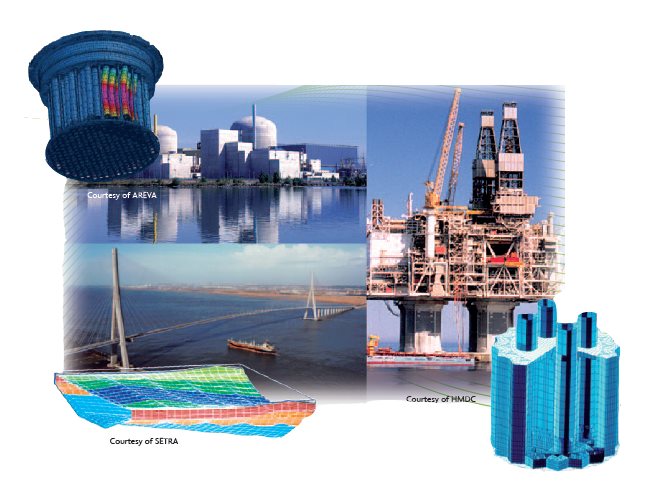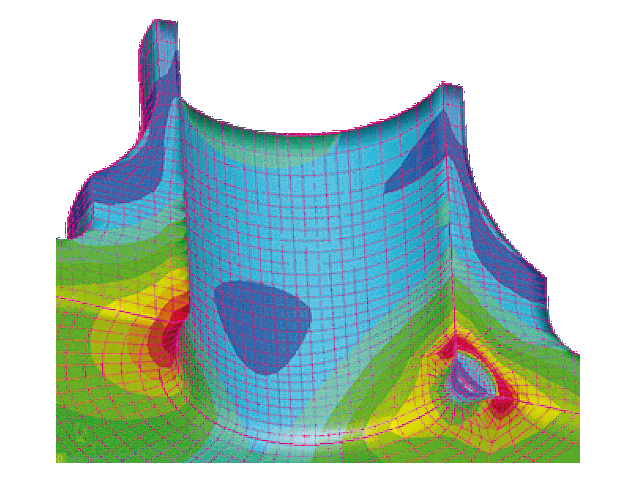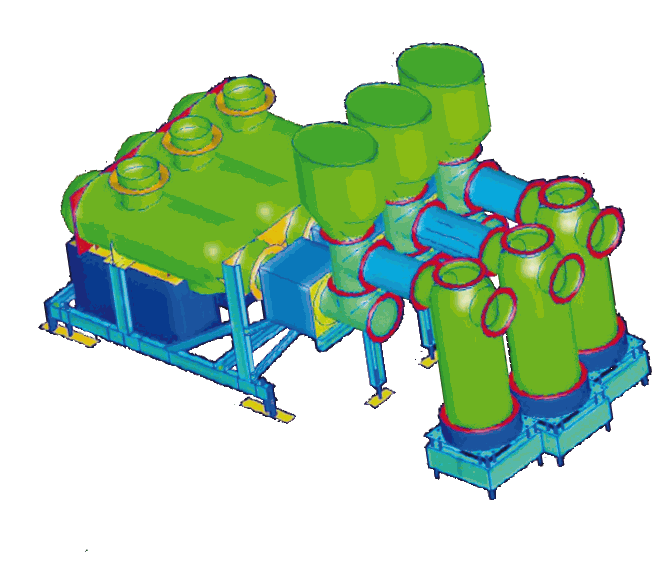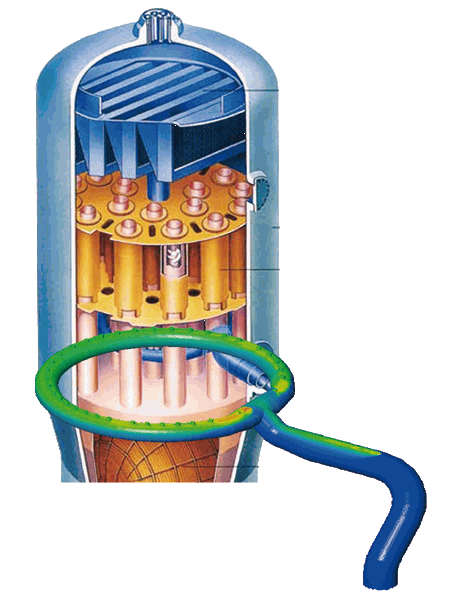Optimized design of complex multi-domain systems in civil and mechanical engineering
The Multiphysics Engineering Simulation Suite: SYSTUS was developed following close cooperation with leading international firms. SYSTUS brings a complete answer to analysis challenges in mechanics, heat transfer, and electrotechnics specifically in the mechanical engineering areas of energy and transportation sectors. Some of the differentiators of SYSTUS are:
- Industry proven multiphysics software solution for regulatory analyses (ASME, RCC-M, fracture mechanics…)
- Access to a variety of materials including advanced metallic material laws
- Reduces cost and handles complex simulation
- Ability to couple multiple physics
- Speeds up the structural analysis process

Core areas of expertise
Thermo-mechanical analysis
Engineers performing advanced studies can manage large displacements, rotations and strains, as well as buckling and post-buckling. Such an extensive modeling scope in the coupled mechanical and thermal fields helps improve the solution design
Thermal Simulation
The software provides advanced thermal features, including conduction, diffusion, enthalpic model, radiation, thermal contact and forced convection. Users can accurately predict temperature distribution and carry out reliable thermo-mechanical analyses.
Advanced materials
Material models and advanced material laws cover a large range of phenomena: fatigue and ratchetting (Chaboche and Amstrong-Frederick), damage, brittle and ductile fracture (Weibull, Gurson/Leblond, Wilkins, Lemaitre), and creep (Chaboche, Razakanaivo, Norton)
Nuclear Power Plant (NPP) analysis
Regulatory and fatigue analyses for the design of nuclear components (class 1&2). The software complies with nuclear codes and standards: ASME, RCC-M (section 3200), RSE-M codifications. In addition, SYSTUS offers a realistic approach based on large 3D models and advanced fatigue criteria (such as Dang-Van criteria).
Coupled analyses
Users perform multi-domain analysis by coupling with a variety of physics such as metallurgy, electrical engineering, and Fluid-Structure Interaction using ESI’s simulation solutions.
Dynamics and seismic
Engineers can perform structural integrity assessment analysis of various structures such as components or assemblies, pipe systems, buildings and bridges.




